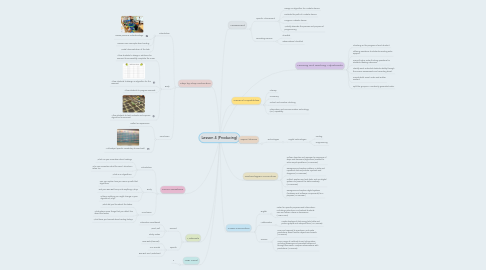
1. Year Level
1.1. 2
2. Focus Questions
2.1. Introduction
2.1.1. What can you remember about coding?
2.1.2. Who can remember what the word "direction" refers to?
2.1.3. What is an algorithm?
2.2. Body
2.2.1. Can you explain how you came up with that algorithm?
2.2.2. Did your Bee-Bot bump into anything? Why?
2.2.3. Is there anything you might change in your algorithm? Why?
2.3. Conclusion
2.3.1. What did you like about the tasks?
2.3.2. What where some things that you didn’t like about the tasks?
2.3.3. What have you learned about coding today?
3. Materials
3.1. General
3.1.1. Interactive Smartboard
3.1.2. Word Wall
3.1.3. Sticky Notes
3.2. Specific
3.2.1. Bee-Bots (class set)
3.2.2. 10 x 8 Grids
3.2.3. Bee-Bot Grid Worksheet
4. Step by Step Instruction
4.1. Introduction
4.1.1. Revise previous understandings.
4.1.2. Review main concepts about coding.
4.1.3. Model demonstration of the task.
4.2. Body
4.2.1. Allow students to design a solutions for Bee-Bot to successfully complete the maze.
4.2.2. Allow students to design an algorithm for the Bee-Bot.
4.2.3. Allow students to program Bee-Bot.
4.2.4. Allow students to test, evaluate and improve algorithm for Bee-Bot.
4.3. Conclusion
4.3.1. Reflect on experience.
4.3.2. Add subject specific vocabulary to word wall.
5. Topic/Theme
5.1. Technologies
5.1.1. Digital Technologies
5.1.1.1. Coding
5.1.1.2. Programming
6. Technologies Curriculum
6.1. Follow, describe and represent a sequence of steps and decisions (algorithms) needed to solve simple problems (ACTDIP004)
6.2. Recognise and explore patterns in data and represent data as pictures, symbols and diagrams (ACTDIK002)
6.3. Collect, explore and sort data, and use digital systems to present the data creatively (ACTDIP003)
6.4. Recognise and explore digital systems (hardware and software components) for a purpose (ACTDIK001)
7. Cross-Curriculum
7.1. English
7.1.1. Listen for specific purposes and information, including instructions, and extend students’ own and others' ideas in discussions (ACELY1666)
7.2. Mathematics
7.2.1. Create displays of data using lists, table and picture graphs and interpret them (ACMSP050)
7.3. Science
7.3.1. Pose and respond to questions, and make predictions about familiar objects and events (ACSIS037)
7.3.2. Use a range of methods to sort information, including drawings and provided tables and through discussion, compare observations with predictions (ACSIS040)
8. Assessment
8.1. Specific Achievement
8.1.1. Design an algorithm for a robotic device.
8.1.2. Evaluate the path of a robotic device.
8.1.3. Program a robotic device.
8.1.4. Verbally describe the process and purpose of programming
8.2. Recording Devices
8.2.1. Checklist
8.2.2. Observational Checklist
